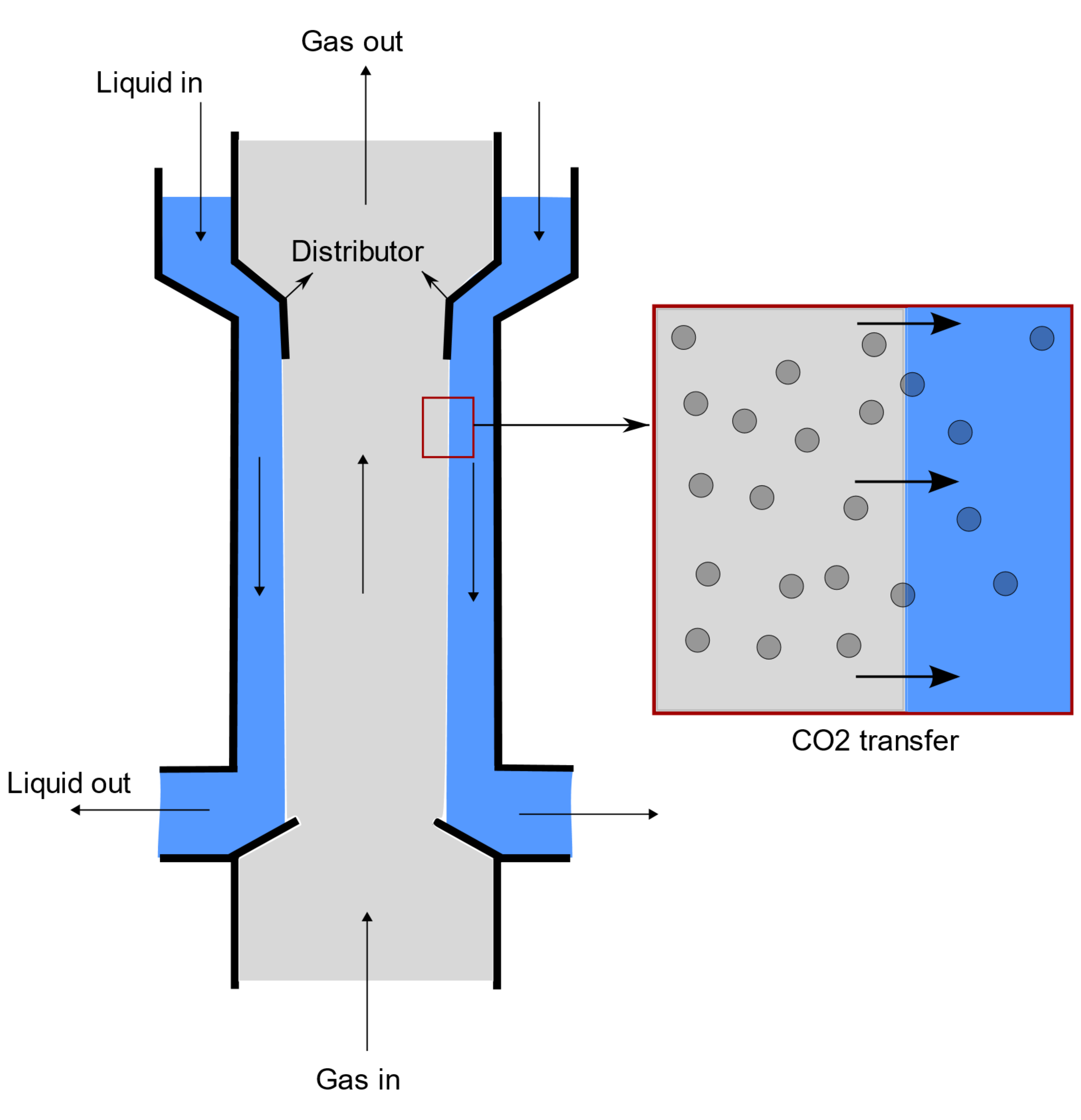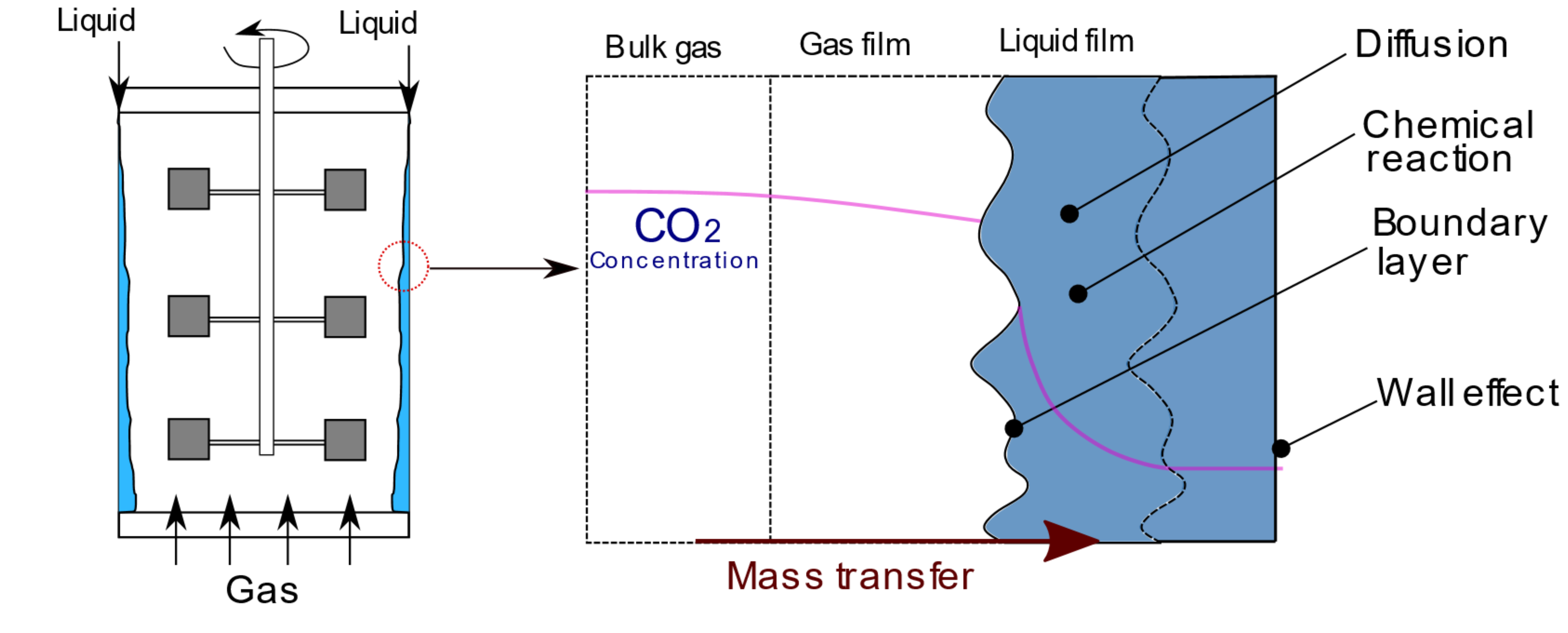
Modeling Reactive Transport Phenomena in Gas-Liquid Contact Reactors with Smoothed Particle Hydrodynamics
- Contact:
- Project Group:
Machine intelligence in energy systems
Overview
The anthropogenic emission ofCO2 into the atmosphere is one of the most significant ecological, social and economic challenges, and as a measure, CCUS (Carbon Capture, Utilization, and Sequestration) has received significant research interest recently. CCUS refers to the wide range of technologies and applications that capturesCO2 from emission and bridges the gap to meet climate goals, among which absorption using falling film reactors post-combustion is an effectual and key technology due to their ability to retrofit the already existing configuration and its relatively higher Technology Readiness Level (TLR) [1].

The project is a collaboration between two institutes, ITS and ITCP (Institute of Technical Chemistry and Polymer Chemistry), and the research work is delegated into two halves. In ITS, we analyze the film hydrodynamics numerically using Smoothed Particle Hydrodynamics (SPH), and in parallel, a test rig is set up with ITCP to run experiments.
Synopsis
CO2 absorption is a reactive transport process where the reaction rate is much higher than the mass transfer rate leading to sharp concentration gradients at the gas-fluid interface, limiting the performance of the reactor byCO2 transport rate to the reactive interface. However, in practice, it is possible to enhance the absorption by a factor of 20 (on average) for the commonCO2 absorbents if the interface dynamics are properly tuned [2,3]. Therefore, there is an excellent opportunity to improve the reactor performance via engineering the gas-liquid interface, which will smoothen the transition ofCO2. However, realizing this potential requires a precise understanding of the complex interface dynamics, transient film thicknesses, velocity distributions, and the simultaneous mass transfer process in the very thin concentration boundary layer (Schmidt number >>1). Traditionally, the complex transport problem has been approximated with film penetration and surface renewal theories. However, such low-order models have been recently proven to fail to reproduce experimental measurements even for temporally and spatially averaged mass transfer rates for various operating conditions and the dynamic nature of the interface [4,5]. Therefore, there is a need for a modeling approach that can capture the transport dynamics of the reactive absorption processes with large jumps in density, species concentration, and viscosity across the wavy liquid-gas interface.

Goals of this research
- Implement and test a reactive transport algorithm for the species conservation equations in turboSPH
- Apply the SPH method to represent the gas-liquid interface accurately
- Capture discontinuities, local penetrations, and mixing of the phases
- Trace reaction fronts on top of the interface tracking
References
[1] Plaza, M. G., Martínez, S., & Rubiera, F. (2020). CO2 capture, use, and storage in the cement industry: State of the art and expectations. Energies, 13(21), 5692.
[2] Don W Green and Robert H Perry. Perry's Chemical Engineers' Handbook, Eighth Edition. McGraw-Hill Education, New York, 8th ed / edition, 2008
[3] P. N. Yoshimura, T. Nosoko, and T. Nagata. Enhancement of mass transfer into a falling laminar liquid film by two dimensional surface waves-some experimental observations and modeling. Chemical Engineering Science, 51(8):1231- 1240, 1996.
[4] Somayeh Norouzbahari, Shahrokh Shahhosseini, and Ahad Ghaemi. CO2 chemical absorption into aqueous solutions of piperazine: Modeling of kinetics and mass transfer rate. Journal of Natural Gas Science and Engineering, 26:1059-1067,2015.
[5] Koteswara Rao Putta, Finn Andrew Tobiesen, Hallvard F. Svendsen, and Hanna K. Knuutila. Applicability of enhancement factor models for CO2 absorption into aqueous MEA solutions. Applied Energy, 206(February):765-783, 2017.

